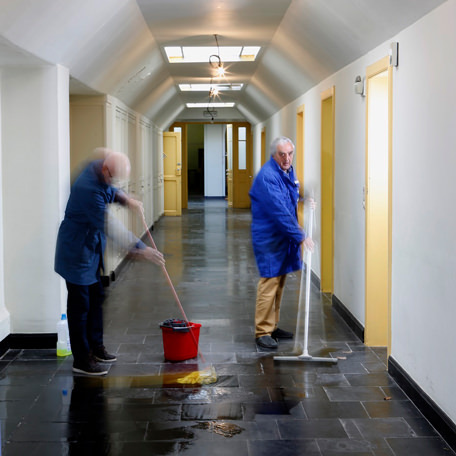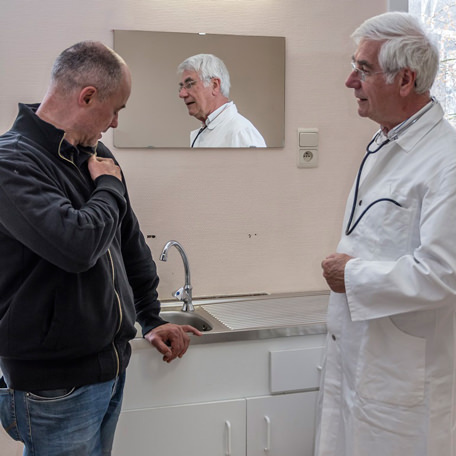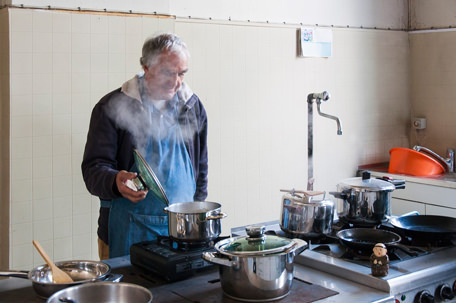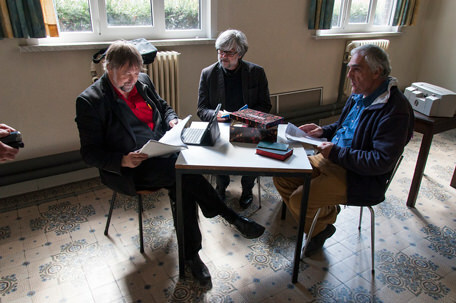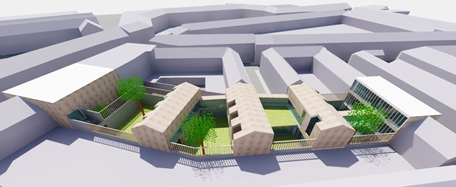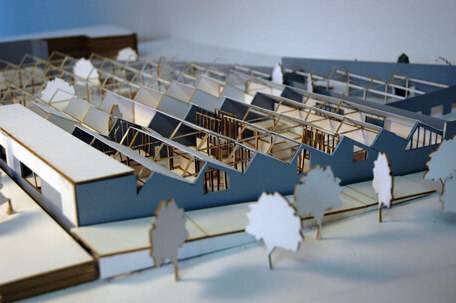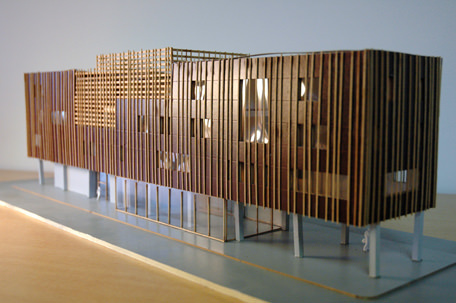Concept of The Houses
Detention of the future: naughty boys matter
And they should be taught in small classes! After all, counting down the days in a big uniform prison does not add a wide perspective. The Houses zealously advocates small-scale detention houses that keep problems under control and that appeal to the prisoners’ responsibilities. This type of detention is a constructive proposal towards a safer society.
A story of, for, with, about and by people
The concept of The Houses is a story for, with, about and by people, who spend some time of their lives within prison walls, who work in our sentence implementation system and who take decisions about sentence implementation and detention.
Their common goal is to trace a constructive track in order to correct mistakes if possible and enable prisoners to take a responsible social role after their release. Prisoners, prison staff, decision makers and society alike are supposed to take mutual responsibility to achieve that goal.
Three principles
Small scale: Naughty boys, small classes
The existing thirty or forty big prisons will be replaced by hundreds of small detention houses, organised by region. All the prison programmes (from closed to open, from basic programmes to intensive counselling within prison walls) will be developed per region. Each prisoner is assigned a Personal Planning Coach who makes and follows his detention and rehabilitation plan throughout all stages. This is a way to avoid the stigma attached to the stereotypical prison and it allows us to respond to individual needs in a more flexible and adaptable way.
Differentiation: Detention fits in better with the prisoner’s life
Each detention facility has its own security plan, detention programme and way of coaching. At the moment of the sentence a solution plan (detention and rehabilitation plan) is made, mapping out a pathway through different types of detention facilities. At the same time rehabilitation is prepared for. This is a good way to stimulate the prisoners’ and society’s development and their sense of responsibility towards themselves, each other and the victims.
Vicinity: community detention
Detention facilities should fit in with the neighbouring community. Starting from the restorative idea, they play an economic, social or cultural part in the neighbourhood. Starting from the normalisation idea they make use of assistance that exists in the surrounding environment to carry out the individual plans. This stimulates mutual engagement and responsibility from the prisoners and society. ‘Community detention’, or detention that is closely interwoven with society, fits in much better with the Basic Law objectives.
Inspiration & studies
To work out this concept, we relied on:
1) The fruits of the various working groups (staff & support, infrastructure, legal factors, strategy) of the project ‘differentiated sentences’ in the womb of the League for human rights
2) National and international studies concerning the efficiency of detention, including:
- “Peer support in detention: a qualitative research to the implementation possibilities in Flemish prisons” - Cérane Van de Reyde - Promotor Prof. Dr. Freya Vander Laenen
- “Costs of detention” - Delfien Van Hoorebeke - Promoteur Prof. Dr. Freya Vander Laenen
- “Small scaled detention in Scandinavia: an eye- opener?!” - Katrien Weltjens - Promoteur Prof. Dr. Kristel Beyens
- “The sentence implementation in Belgium and Norway: a world of difference?” - Ellen Huybrechts - Promoteur. Prof. Dr. Tom Vanderbeken
3) Examples of similar models from home and abroad, including:
- ‘De Grote Robijn’, that makes a centre for youngsters from a monastery
- The Re-entry house in Ruiselede - “In between detention and freedom: the re-entry house. An experience research” - Sieglinde Verkindere - Promotor Prof. Tom Vanderbeken
The concept has been refined on the basis of:
1) the results of a number of case studiesof possible detention houses in Belgium
2) exercises from architect students that resulted in models and neighborhood plans for possible detention houses
3)further studies on specific aspectsof the concept (e.g. the cost, the integration in a neighborhood, including:
- “Framework for the evaluation of locations for a sustainable sentence implementation project” - Sarah Holbrouck - Promoteur Prof. Dr. Ronald De Meyer
- “Communication strategies to tackle the NIMBY-problem with detention houses” - Ambre Deprez - Promoteur Prof. F. Verbruggen
- “An architectural typologie for a small scaled differentiated sentence implementation” - Elke Deyaert - Promoteur Prof. Dr. Ronald De Meyer
- “Small is beautiful? A research to the possibilities and limitations of small scaled detention models” - Eleni De Roek - Promoteur Prof. Dr. Tom Vander Beken
- “Small scaled detention houses as an alternative for the Belgian prison system” - Birgit Van Vuchelen - Promoteur Prof. Dr. Ronald De Meyer
- “Small scaled detention forms evaluated. Breaking The Walls” - Amber Van Belle - Promotor Prof. Dr. Tom Vander Beken
- “A prospectie research to the organisation of supportieve services in a transition house” - Linde Tilley - Promotor Vincent Eechaudt
- “Young adults between the cracks?” - Steunpunt Algemeen Welzijnswerk
- “Handed over youths” - Yana Jaspers - Promotoren Prof. Dr. Jenneke Christiaans & Prof. Dr. An Nuytiens
- “The opinion of the citizen about the role of detention” - Manu Pintelon - Promotor Prof. Dr. Charlotte Colman
- “The constructional elaboration of a transitional detention house” - Sofie Hauquier - Charlotte Van Rysseghem - Promotor Alexis Versele
- Implanter une maison de detention a Liège - Claire Lekeu - Sous la direction de : David Tieleman
- Costs of detention houses - Anne-Sophie Luca & Thomas Luca - Promoter: Prof. Dr. Filip Roodhooft
4) Consultation with organizations and local authorities that may be interested in starting up a detention house, which among other things resulted in a roadmap for the implementation of a transition house (this is the first kind of detention house that will be set up in Belgium, for people at the end of their sentence)
